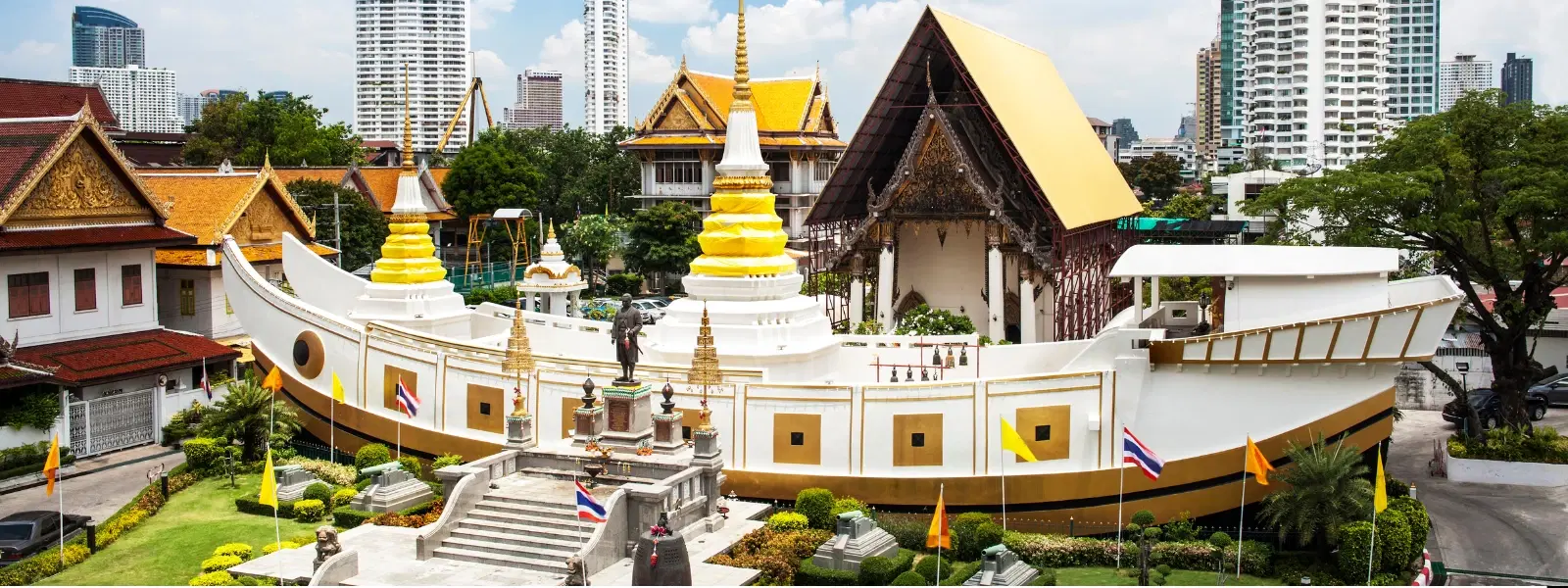
Hotels
•03 min read

Dhauli Shanti Stupa stands as a magnificent symbol of peace and transformation. Nestled on the serene Dhauli Hill near Bhubaneswar, this site has witnessed a profound change in history where Emperor Ashoka embraced Buddhism after the tragic Kalinga War. In this blog, we delve into the intimate connection between Dhauli Shanti Stupa, Ashoka’s transformational journey, and the rich Buddhist heritage of Odisha. Readers will uncover detailed insights into its history, architecture, and cultural significance, answering common queries about this historic marvel.
The bitter scars of the Kalinga War left Emperor Ashoka deeply grieved. The battlefield near Dhauli served not only as a reminder of the cost of war but also as the crucible of his transformation. Overwhelmed by remorse for the devastation, Ashoka turned toward Buddhism, embracing a path of non-violence and compassion. This turning point on Dhauli Hill redefined his legacy, establishing the monument as a marker of change, peace, and spiritual enlightenment.
After his conversion, Ashoka dedicated considerable effort to spread Buddhist teachings in Odisha. The inscriptions and edicts carved at Dhauli reflect his commitment to moral governance, promoting a society based on compassion, tolerance, and wisdom. These relics underscore not only his personal evolution but also the broader cultural shift toward peace, making Dhauli a perennial symbol of hope and renewal.
"Did you know? Dhauli Hill is believed to be the site where Emperor Ashoka renounced violence and embraced Buddhism, marking a pivotal moment in Indian history."
The history of the Shanti Stupa is as captivating as its imposing structure. Constructed with a spirit of reconciliation and unity, the stupa symbolizes the peace that emerged after a tumultuous era. The project also highlights a successful Indo-Japanese collaboration, where international efforts came together to create a monument that celebrates cultural diplomacy and the global pursuit of peace.

The architectural design of the stupa is a testament to the rich traditions of Buddhist art. Its pristine dome, intricate sculptures, and carefully inscribed edicts combine to form a visual narrative of Ashoka's transformation at Dhauli. The structure is adorned with Buddhist motifs and symbols that evoke the timeless values of serenity and enlightenment, inviting visitors to not only admire its beauty but also connect with its spiritual essence.
Beyond its physical beauty, the Dhauli Peace Pagoda holds a deep spiritual resonance. It serves as a pilgrimage site for Buddhists and curious travelers alike, symbolizing the universal quest for harmony. The structure stands as a beacon of hope and an enduring tribute to the principles of peace, further cementing its importance in Odisha's cultural landscape.
Odisha is a treasure trove of Buddhist heritage, with sites such as Ratnagiri, Lalitgiri, and Udayagiri adding to its historical charm. Each of these locations tells a unique story of spirituality and artistry. In this continuum, Dhauli Shanti Stupa shines as a pivotal landmark that encapsulates the essence of Odisha's Buddhist tradition, seamlessly interweaving the threads of ancient wisdom with modern reverence.
Emperor Ashoka's embrace of Buddhism transformed the cultural fabric of Odisha. His legacy is not only etched in the rock inscriptions at Dhauli but is also celebrated in the many monuments that dot the region. The ongoing reverence for his teachings underlines the enduring link between his ideals and the spiritual ethos of the state, making the Ashoka connection in Odisha an integral part of its history.
Reaching Dhauli Hill is a pleasant journey that offers both convenience and scenic beauty. From Bhubaneswar, visitors can take well-connected roadways, rail services, or even air travel to nearby airports. Clear signages and local transport options make the trip hassle-free, allowing travelers of every age, whether the wanderer, the planner, or the professional, to enjoy a seamless experience.

The best time to explore the tranquil environs of Dhauli Shanti Stupa is during the cooler months when the climate is mild and inviting. Apart from the stupa, the nearby Daya River and other historical sites offer enriching experiences. Each path you take reveals another layer of Odisha’s fascinating history, ensuring that your visit is as enlightening as it is enjoyable.
The Dhauli inscription is one of Emperor Ashoka’s edicts carved on a rock near Dhauli Hill, promoting non-violence, compassion, and enlightened governance based on Buddhist principles.
Dhauli Shanti Stupa was built to commemorate Ashoka’s transformation after the Kalinga War and stands as a powerful symbol of peace and Buddhist teachings.
The Shanti Stupa, also known as the Peace Pagoda, is a prominent Buddhist monument on Dhauli Hill that represents Ashoka’s commitment to spreading the message of peace and compassion in the aftermath of war.
Dhauli holds immense religious significance as a site of Buddhist heritage, symbolizing spiritual transformation and attracting pilgrims from across India and beyond.
In summary, the majestic Dhauli Shanti Stupa is a beacon of historical significance and spiritual rebirth. It not only marks Emperor Ashoka’s poignant transformation but also plays an essential role in illustrating Odisha’s rich Buddhist heritage. As you immerse yourself in the captivating history and serene atmosphere, you gain a deeper appreciation of this central chapter in India’s cultural and spiritual legacy.